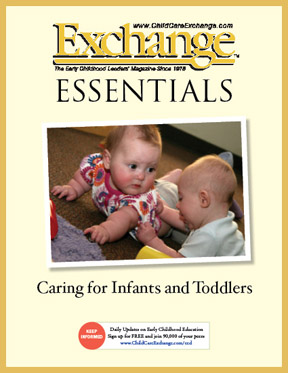In the simplest terms, a leader is one who knows where he wants to go, and gets up and goes.
-John Erskine
Dr. Elizabeth Spelke, a professor of psychology at Harvard University Laboratory for Developmental Studies, is a pioneer in the use of the infant gaze as a key to the infant mind — that is, identifying the inherent expectations of babies as young as a week or two by measuring how long they stare at a scene in which those presumptions are upended or unmet. New York Times, reported on what Spelke and her associates have learned about what babies know:
"Babies are born accountants. They can estimate quantities and distinguish between more and less. Show infants arrays of, say, 4 or 12 dots and they will match each number to an accompanying sound, looking longer at the 4 dots when they hear 4 sounds than when they hear 12 sounds, even if each of the 4 sounds is played comparatively longer. Babies also can perform a kind of addition and subtraction, anticipating the relative abundance of groups of dots that are being pushed together or pulled apart, and looking longer when the wrong number of dots appears....
"Babies are born Euclideans. Infants and toddlers use geometric clues to orient themselves in three-dimensional space, navigate through rooms and locate hidden treasures. Is the room square or rectangular? Did the nice cardigan lady put the Slinky in a corner whose left wall is long or short?....
"...infants just a few weeks old show a clear liking for people who use speech patterns the babies have already been exposed to, and that includes the regional accents, twangs, and R’s or lack thereof. A baby from Boston not only gazes longer at somebody speaking English than at somebody speaking French; the baby gazes longest at a person who sounds like Click and Clack of the radio show 'Car Talk.'
"In guiding early social leanings, accent trumps race. A white American baby would rather accept food from a black English-speaking adult than from a white Parisian, and a 5-year-old would rather befriend a child of another race who sounds like a local than one of the same race who has a foreign accent."
 This volume of Exchange Essentials includes 15 selected Exchange articles, in PDF format, offering insights and strategies for working with infants and toddlers in classroom settings:
This volume of Exchange Essentials includes 15 selected Exchange articles, in PDF format, offering insights and strategies for working with infants and toddlers in classroom settings:
- Bright Beginnings for Babies
by Pam Schiller
- Can Babies Read and Write?
by Deb Curtis
- Brain Research, Infant Learning, and Child Care Curriculum
by J. Ronald Lally
- More Purposeful and Intentional Infant and Toddler Care
by Pam Schiller
- Secrets for Early Childhood Professionals
by Alice Sterling Honig, Ph.D.
- And 10 More!
 << Previous Issue
| View Past Issues | | Next Issue >>
<< Previous Issue
| View Past Issues | | Next Issue >>  This volume of Exchange Essentials includes 15 selected Exchange articles, in PDF format, offering insights and strategies for working with infants and toddlers in classroom settings:
This volume of Exchange Essentials includes 15 selected Exchange articles, in PDF format, offering insights and strategies for working with infants and toddlers in classroom settings:
Comments (1)
Displaying 1 CommentInternational Early Childhood Consultant
Leominster, MA, United States
What Babies Know was very interesting and brought back memories. While in Nigeria I studied "The Effect of the Young Child-Carrying Practices of Nigerian Woman: On Gross Motor and Language Development in Young Children". (ED418781)
with Iseghohimhen, Tony Onon; Aondo-Akaa, Patricia Ashi.
The study found that carrying practices in Nigeria are a cultural and logistical necessity for mothers for purposes of transportation, field and farm work, and child safety. It was also found that through observation, the Nigerian adult teaches the next milestone to the infant, for example, propping the infant to teach sitting or holding the infants' hands above his or her head while teaching walking. I set up a safe space for young babies to be in their backs and move freely. I bend over a infant and smiled. It was the first time she ever saw a race other then her Mom's. She stared and stared and looked back from me to her mom over and over. She knew no fear, only curiosity. and smiled. Please add on your extended list of resources Magda Gerber's work and others that are dedicated to respectful interactions with infants and primary caregiver.
Post a Comment